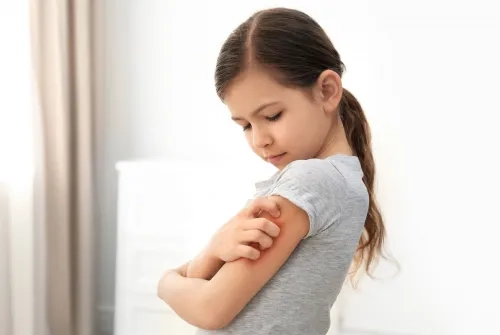Alo Yeditepe
Alo Yeditepe
Rashes That Require Attention in Children
While skin rashes are sometimes a stand-alone problem, they may also be the initial symptom of another disease. Spots or rashes especially in children may drive parents into panic. Some rashes can be extremely innocent, while quicker action may need to be taken in other cases. Pediatrician Perihan Çobanoğlu Saf, M.D., from Yeditepe University Kozyatağı Hospital listed the rashes which should be taken seriously in children and explained the necessary precautions.
Viral Rashes; They Are Not Caused By Only One Disease
Viral rashes, which are very common in children, usually develop along with or after fever episodes that persist for 2 to 3 days. Since these small red eruptions that appear more remarkable in the trunk are not specific to one disease, there is no certain definition. It varies between diseases. For example, rashes of diseases such as measles, rubella, chicken pox and sixth disease are recognized easily. The approach for ever increasing viral rashes is similar. Perihan Çobanoğlu Saf, M.D., clarifies that parents should not be alarmed at this condition and informed about the treatment: “There is no special medication for viral diseases. Most children who are otherwise healthy will overcome the disease and get healthy again. Medications, such as anti-pruritic or antipyretic agents, can be started in certain cases to ease the worry of parents. However, they have no therapeutic efficiency. Antibiotic agents play no role in treatment of those diseases. Children should be re-assessed by a doctor at certain intervals, especially when fever is severe and until rashes regress thereafter. Since most of the diseases that cause viral rashes are contagious, sick children should be kept away from others.”
Skin Infections; There is Risk of Infecting Other Children
Clarifying that certain microbes infect directly the skin, Perihan Çobanoğlu Saf, M.D., also added that the best known one is a skin lesion characterized by small blisters, called impetigo. Typical feature of these lesions is golden yellow crust and they require close attention, as they can spread to other children. Fungal infections are usually detected after very intense diaper rashes that require use of antifungal creams. However, use of antifungal cream on all rashes may be seriously hazardous. Cream may be started under supervision of a pediatrician, if the rash does not heal and persist in the form of very small eruptions.
Hives; Watch Out If It Lasts Longer Than 6 weeks!
Hives, a type of allergic reaction, is a common type of pediatric rash. These itchy rashes are equal to coins in size and they tend to conglomerate; rashes fade away within 24 hours and are replaced by others. Highlighting that these rashes disappear in one day, although they can persist for several days, Perihan Çobanoğlu Saf, M.D., adds: “they are usually reactions against medications and foods, but they may also occur in case of insect bites or certain infections. They do not require any allergic or other examination as long as they last shorter than 6 weeks. The required course of action is to start anti-allergic medication and creams under supervision of a pediatrician in order to put the condition under control. If they frequently recur or persist longer than 6 weeks, a detailed examinationisnecessary.”
Which Conditions are Emergencies?
Expressing that certain skin spots and rashes require quicker action and immediate physical examination, Pediatrician Perihan Çobanoğlu, M.D., from Yeditepe University Hospitals lists emergencies as follows:
- Presence of speckled marblish rashes that occur between diseases and take a generalized form. Action should be taken urgently, as this condition may indicate a problem in circulatory system of the child.
- Another sign of serious problem is the purple rashes that do not fade away when compressed, begin in the form of solitary lesions and tend to form clusters as it advances.
- Another type of rash that should warn parents is bruises that can be seen in all children in case of fall while playing, as they are mostly ignored. It is necessary to pay attention to bruises that occur in body parts, which are not very prone to traumas, such as the trunk, and that are not caused by fall or impact, such as ones in arms and legs.
This content was prepared by Yeditepe University Hospitals Medical Editorial Board.
Alo Yeditepe





